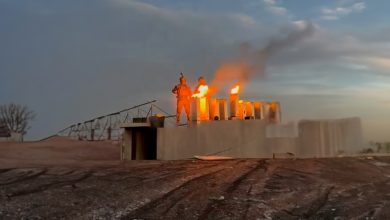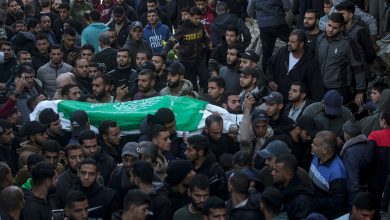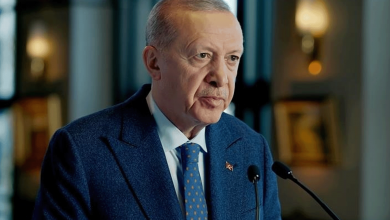Gaza – Just over two weeks after a fragile ceasefire agreement took effect in the Gaza Strip, brokered by Qatar, Egypt, Turkey, and the United States, escalating Israeli actions are raising serious concerns about its imminent collapse. A recent Israeli airstrike, targeting a civilian vehicle in the Nuseirat refugee camp, has ignited a firestorm of criticism and fueled accusations that Israel is attempting to unilaterally impose a new security paradigm on Gaza, mirroring its long-standing policies in Lebanon.
The Israeli military confirmed the strike, claiming it targeted a member of the Palestinian Islamic Jihad (PIJ) allegedly planning an imminent “terrorist attack.” According to the Israeli Defense Forces (IDF), the operation was conducted with “precision” by a drone. Palestinian medical sources reported that four people were wounded in the strike, with one in critical condition. This incident marks the first officially acknowledged Israeli targeting of Palestinian militants since the ceasefire was reinstated following earlier, more intense bombardments that resulted in dozens of Palestinian deaths.
News of the Nuseirat strike rapidly spread across social media platforms, triggering widespread outrage among Palestinians and prompting accusations that Israel is deliberately undermining the ceasefire agreement. Many users expressed fears that Israel is seeking to implement a “Lebanon model” in Gaza, characterized by targeted assassinations and preemptive strikes against perceived threats, regardless of the ceasefire terms.
“Israel is trying to change the ceasefire agreement to apply it by force in the Lebanese way, contrary to what was agreed upon,” one user wrote on X (formerly Twitter). “This is just the beginning.”
The “Lebanon model,” in this context, refers to Israel’s decades-long policy of conducting targeted killings and military operations in southern Lebanon under the pretext of self-defense against Hezbollah and other militant groups. Critics argue that this approach disregards Lebanese sovereignty and contributes to ongoing instability in the region. The fear among Palestinians is that Israel is now seeking to replicate this strategy in Gaza, effectively turning the strip into a zone of perpetual conflict and undermining any prospect of a lasting peace.
Mohammed Haniya, another prominent social media user, stated, “The occupation bombed a motorcycle in Nuseirat in the central Gaza Strip a short while ago in a clear violation of the ceasefire agreement, in a step understood as the beginning of the ‘Lebanon model’ scenario of targeting resistance fighters in Gaza. Everyone will close their eyes, and the agreement will remain hanging between a ‘bloody yellow line’ and individual assassinations… and manipulation of the remaining clauses… to become…”
Online commentators have highlighted that the continuation of Israeli violations of the ceasefire strongly suggests that Israel’s intentions remain unchanged. They believe the agreement is merely a temporary cover, allowing Israel to regroup and prepare for renewed aggression. The Nuseirat incident, they argue, serves as a stark reminder that Israel only understands the language of force and will only adhere to agreements if compelled to do so.
For more information about Palestine, check our dedicated section.
Ali Abo Rezeg, a commentator, wrote, “The occupation forces carried out a cowardly assassination operation a short while ago in the Nuseirat camp in the central region. There is anger and resentment in the Gazan street because of what happened, but it is anger and resentment in a predictable context. From the first moment, there were clear Israeli tendencies towards repeating the South Lebanon scenario in Gaza, and voices demanding resistance…”
Adding to the apprehension, some analysts suggest that the silence of the international mediators – Qatar, Egypt, Turkey, and the U.S. – could embolden Israel to continue these assassinations, mirroring the situation in Lebanon. They urge these mediators to exert pressure on Tel Aviv to halt its violations and fully comply with the terms of the Sharm el-Sheikh agreement, the location where the ceasefire was initially formalized.
Further contributing to the sense of unease, commentators are also pointing fingers at Israeli Prime Minister Benjamin Netanyahu, arguing that he is actively attempting to gradually dismantle the agreement under various pretexts, including concerns about tunnels, weapons, and the return of the bodies of Israeli hostages. This, they claim, is a deliberate attempt to impose new realities on the ground and in the political arena.
Ahmed bin Salem Al-Akhzami, another social media user, emphasized the need for a unified response to Israeli violations. “For every violation in Gaza, there must be a unified response from the factions whenever the opportunity arises,” he wrote. “We do not want to repeat the South Lebanon scenario.”
Concerns are mounting that the ongoing violations could push the situation in Gaza to a breaking point, threatening the collapse of the fragile truce and leading to a renewed cycle of military escalation. This would occur at a time when the Gaza Strip is already grappling with a severe and worsening humanitarian crisis, further exacerbating the suffering of its residents. The international community is now facing increasing pressure to intervene and prevent a return to full-scale conflict, ensuring that the ceasefire agreement is upheld and that the prospect of a lasting peace is not extinguished. The coming days will be critical in determining whether the ceasefire can be salvaged or whether Gaza is destined to endure another round of violence and instability. The stakes are undeniably high, and the consequences of failure could be devastating for both Palestinians and Israelis alike.



